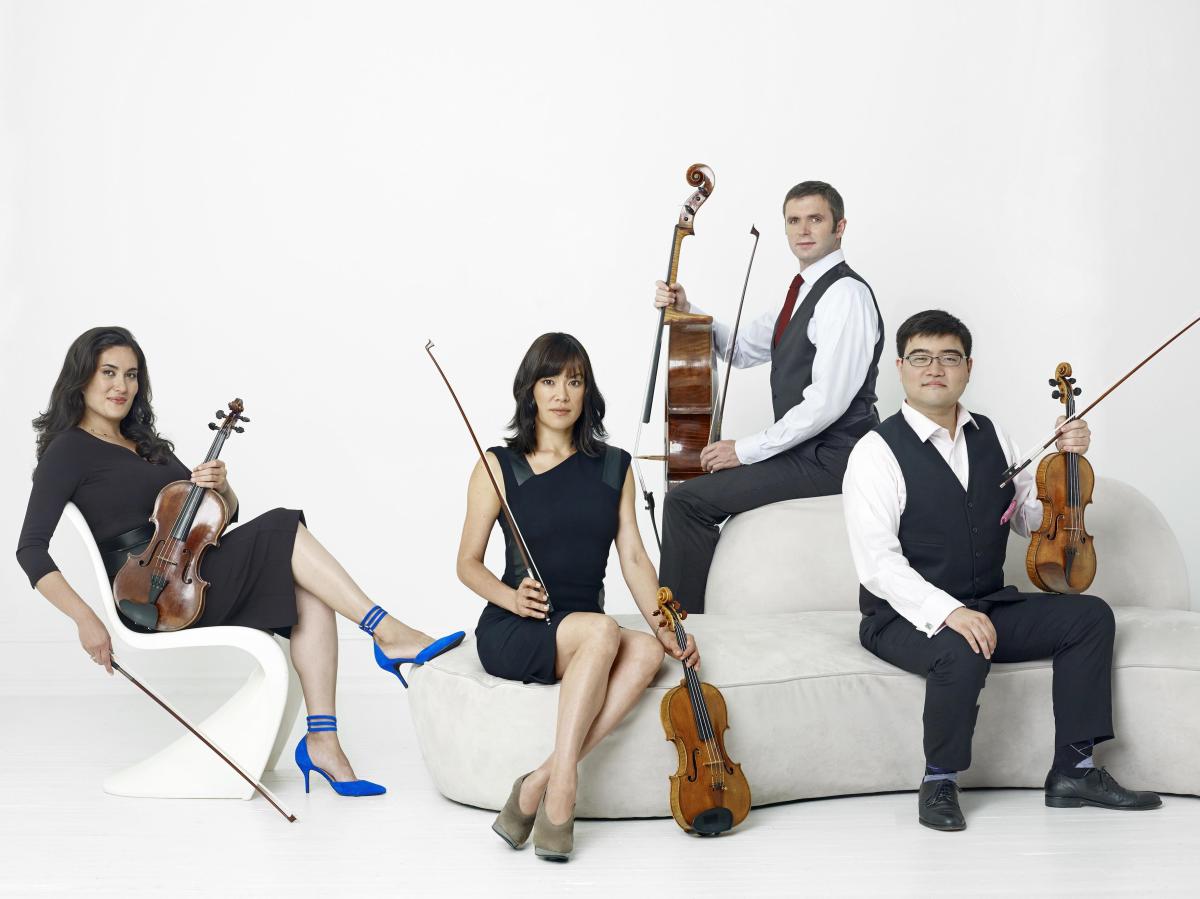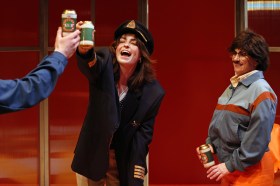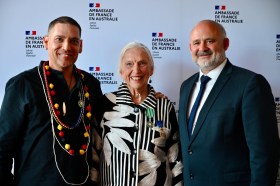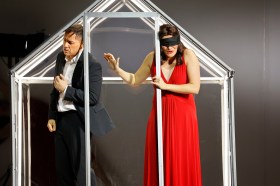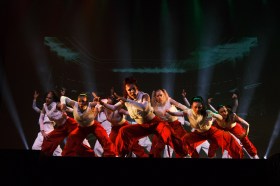Image: Ensō Quartet photograph by Juergen Frank.
The origin of the name of this string quartet is found in Zen Buddhism, an ensō being a hand-drawn, black-ink circle in one or two brushstrokes formed to express a moment when the mind is free to let the body create. The ensō symbolises enlightenment, strength, elegance, the universe, and mu (the void). Comprising three Americans and one New Zealander and formed in 1999 at Yale University, the ensemble, now based in Manhattan, has won several important awards and competitions; it records with Naxos Records. Part of the ensemble’s inaugural national tour for Musica Viva, its performance on Tuesday night comprised a newly written quartet by Australian composer Brenton Broadstock, Safe Haven; Beethoven’s String Quartet in E flat major, Op 74 ‘The Harp’; Turina’s Serenata for string quartet, Op 87 and Ginastera’s rarely heard second String Quartet, Op 26.
Brenton Broadstock bases his new quartet on the life story of Marianne, wife of the anonymous commissioner of the work. She found safe haven in Australia after escaping with her parents from the turmoil of the Hungarian Revolution in 1956. This honest and warm-hearted work has its origins in a Hungarian nursery melody of touching simplicity (based on the outline of a C major triad), and is in three connected parts: Escape, Through a Child’s Eyes and Safe Haven. The unruly disturbance of the opening movement, where parts of the melody are separated and developed, leads to a more innocent meditation that flows into a gentle lullaby with the melody now dispersed into a trance-like Ionian modal cloud. The final section initially features the viola, followed by the others in counterpoint resolving the work in happy cadential contentment. The work was well composed and sensitively performed. I wondered if its duration at more than 20 minutes when 15 were predicted, with a single movement holding one musical notion, may indicate that the work needs some revision.
Beethoven’s well-known ‘Harp’ Quartet, representing the sole item from the mainstream repertoire on the program, had an unsettled start with rough intonation and some uneven phrasing. A certain monotony in the reading of the slow movement was enlivened by the urgency and vigour of the Scherzo, though shaky rapport and intonation returned in the final variations.
The second half of the concert presented lightweight twentieth-century work by Spaniard, Joaquín Turina and Argentinian composer, Alberto Ginastera. Both were performed with innate style and dynamic verve, the ensemble relishing both composers’ edgy, visceral, colourful and breezy creative mind-set. Composed in 1958 and revised a decade later, the Ginastera was a particularly rewarding work to hear; well-structured and brimming with interesting material. As an encore the audience was treated to an evening stroll along Havana’s seaside esplanade with the engaging Bagel on Malecón by Lev ‘Ljova’ Zhurbin.
The Ensō Quartet was enthusiastically received by a smaller than usual audience on this wintry, Melbourne night; one might predict that it will not be too long before a return visit is planned.
Rating: 3.5 stars out of 5
Ensō Quartet
Musica Viva International Concert Season 2016
Presented by Musica Viva Australia
Tuesday 7 June 2016
Melbourne Recital Centre, Elisabeth Murdoch Hall

